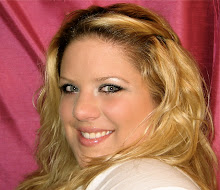Holy moly. Its raining fire everywhere in SOCAL right now. Its windy and smokey. YUCK. I feel like Im back in Guam with the typhoon winds, but instead its super dry and smokey. ANYHOOO... found this article. Thought you should know whats in YOUR makeup. Remember... RM doesnt use any talc or parabens in our product!
Are Your Cosmetics Making You Sick?
By Shelly Ballestero
Licensed Esthetician
CBN.com – Could that “hope in the bottle” cause disease, disrupt hormones, or trigger allergies and irritate your skin? The answer is yes. Scientists have shown that chemicals in cosmetics can pass through the skin, into the bloodstream and internal organs, so we should be more aware of what is being absorbed into our skin.
Hidden Dangers in the Powder Puff
Let’s take a well-known ingredient that is in a ton of foods, makeup, skincare, powders, and medicine… talc.
What is talc? According to the Cancer Prevention Coalition, “Talc is a mineral, produced by the mining of talc rocks and then processed by crushing, drying and milling. Processing eliminates a number of trace minerals from the talc, but does not separate minute fibers which are very similar to asbestos.” 1
Now, you may be thinking that talc has been around for years, so how can it be dangerous? Read on.
Talc particles have been shown to cause tumors in the ovaries and lungs of cancer victims. In 1973 the FDA drafted a resolution that would limit the amount of asbestos-like fibers in cosmetic-grade talc. According to the Cancer Prevention Coalition, no ruling has been made. Cosmetic-grade talc remains non-regulated by the federal government.
Your best bet is to stay away from talc and try other alternatives, such as mineral powders, cornstarch, or rice powder for oil absorption.
Allergies, Migraines, and Cancer—Oh, My!
Here’s another "winner" to stay away from: coal tar, found in eye shadow, which is also linked to cancer. Lipstick can contain high levels of artificial colorings made from coal tar derivatives, which can cause allergic reactions. FD&C color pigments are often made from coal tar, too.
Nitrosamine, a preservative, has been found in foundation, cured meats, pesticides, water, even air. Some epidemiological studies have associated increased incidence of human cancer with the presence of nitrosamine.
This added ingredient takes the prize: Formaldehyde—the same stuff that preserves deceased bodies—is used in makeup, bubble bath, shampoo, conditioner, moisturizers, and a whole lot more. Laurel sulfate may contain formaldehyde as a preservative, and other toiletries may have it without listing it on the label. For instance, imidazolidinyl urea and DMDM hydantoin may release formaldehyde and cause migraines, allergies, and asthma.
A couple more to avoid are paraben preservatives and propylene glycol. Parabens were developed in the 1930s to stabilize creams, and are now used in nearly all skin care products. Recently, researchers have found that there may be a connection between paraben preservatives and both breast cancer and male reproductive problems. Propylene glycol is an alcohol. It is manufactured synthetically, typically from petroleum, or it is manufactured naturally from corn. Propylene glycol, which is used as a wetting agent, is an active ingredient in industrial anti-freeze. It may cause kidney and liver abnormalities and even damage cell membranes.
Why do companies use harsh ingredients like these? Because they can, and the cosmetic industry is not as strict as it is for food and drugs. Plus, synthetic ingredients are a fraction of the price of their natural counterparts, making them attractive to manufacturers.
Be a Label Detective
Understanding these ingredients and decoding what they really are will allow you to be consumer savvy. A couple of resources that will help you become a label detective are The Safe Shopper’s Bible by David Steinman and Samuel S. Epstein, M.D., A Consumer’s Dictionary of Cosmetic Ingredients by Ruth Winter, M.S. I also like Pure Skin by Barbara Close.
Most people have been shopping in the dark—until now. We are turning the light on so that we can see what is on the labels and what is going on and in our skin. Beauty and health go hand in hand. It’s about balance. Beauty in balance means a healthier you.
Subscribe to:
Post Comments (Atom)


No comments:
Post a Comment